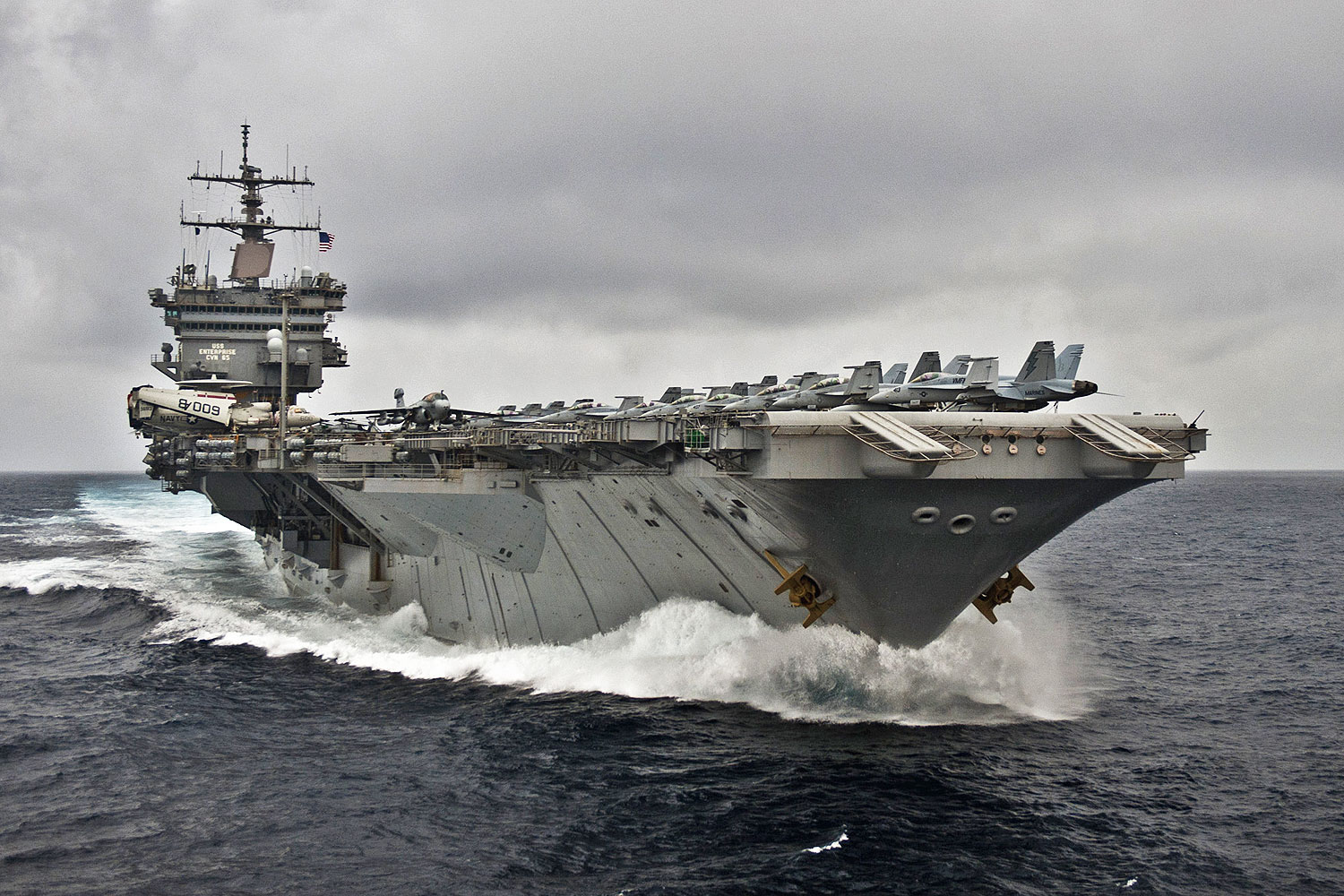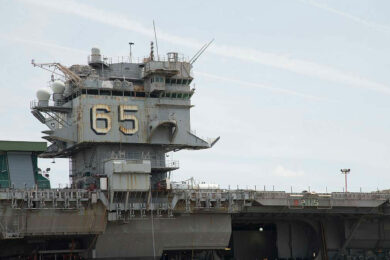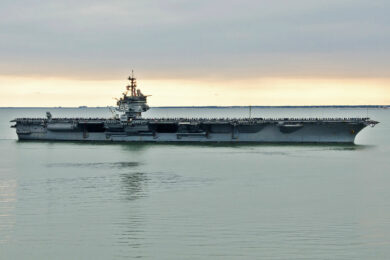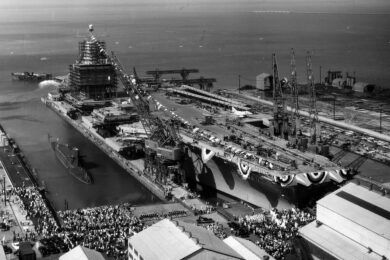The first nuclear-powered aircraft carrier in history, the USS Enterprise (CVN-65) will be dismantled at a private shipyard, the US Navy announced days ago.
The decision comes six years after the vessel was decommissioned, in February 2017, and almost eleven years after it returned from its last mission.
The Navy was evaluating three alternatives for dismantling the massive ship, with a displacement of almost 95 thousand tons. The first would be to partially dismantle the vessel, preserving around a third of its structure, where the eight nuclear reactors are housed (whose radioactive fuel was removed years ago).
The remaining section would then be towed to the Puget Sound Naval Shipyard in the Pacific, requiring the convoy to bypass South America. There, the eight reactors would then be housed in huge 3,000-ton crates that would be taken by barge to an area disposal of radioactive material.
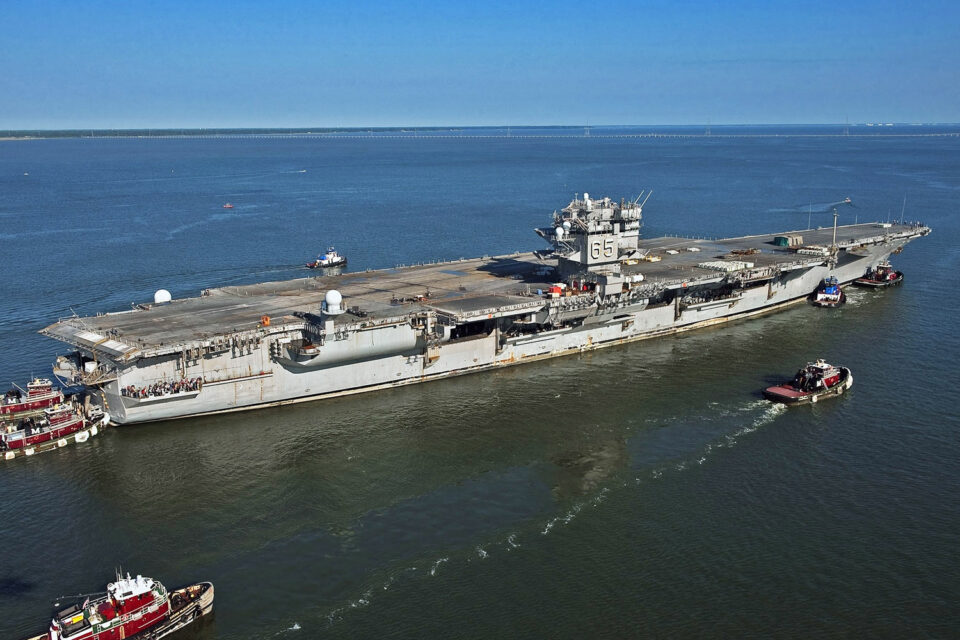
The second alternative would be similar, but the sections where the reactors were divided into four groups. The size of these compartments, however, would require changes in transport logistics.
The Navy was also considering keeping the ex-Enterprise in its current position, at the shipyard in Newport News, Virginia, but the situation would be provisional as it would require routine maintenance of the vessel until a definitive solution was found.
Bid coming soon
The chosen alternative provides for an auction open to private companies interested in carrying out the service and which should be scheduled soon.
The Navy is considering three locations to dismantle the old aircraft carrier: Newport News, close to where it is located, Mobile, Alabama, and Brownsville, Texas, a city on the border with Mexico and whose shipyard is next to where SpaceX tests launches of the Starship rocket.
In all of them, the vessel’s displacement would be short, avoiding a lengthy journey like the one that occurred with the former aircraft carrier USS Kitty Hawk (CV-63), which in 2022 bypassed the entire Americas to reach its final destination, in Texas.
The private shipyard will then be tasked with recycling the uncontaminated materials and removing and dismantling the reactor components, hundreds of pieces of which will be sent to storage facilities specializing in nuclear material.
The process is expected to be completed in around five years, close to the end of the decade. The other alternatives were estimated to take twice the time required.
“Big E”
The USS Enterprise was built in the late 1950s and commissioned in November 1961. Built by Newport News Shipbuilding, the aircraft carrier was at its time the largest military ship in the world, only surpassed in 1975, when the USS Nimitz entered service.
But its biggest difference, besides its size, was its nuclear propulsion, which allowed the aircraft carrier to sail for years without the need for refueling.
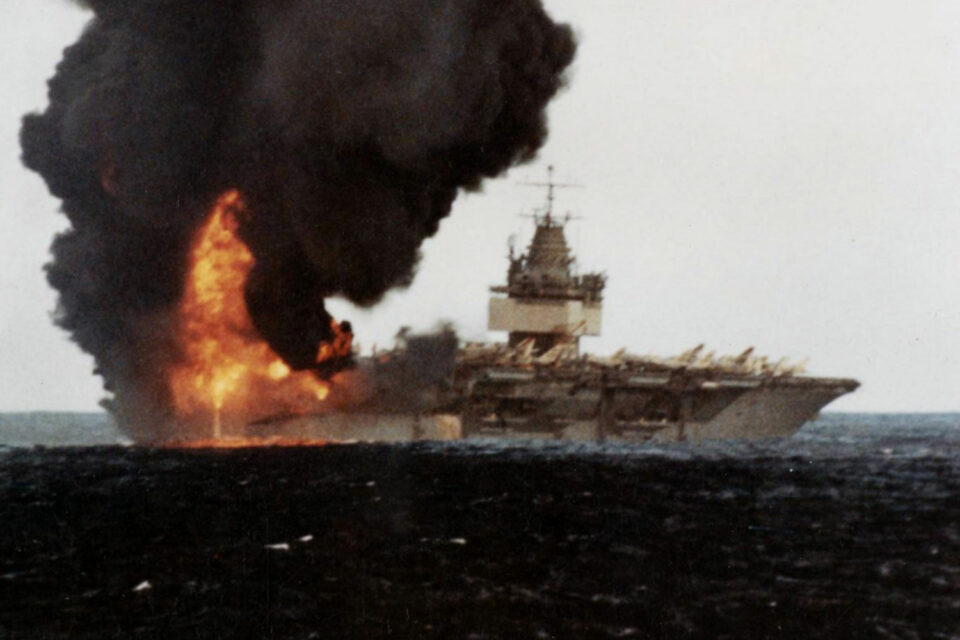
Additionally, the CVN-65 was equipped with an innovative Hughes electronic scanning radar known by the acronym SCANFAR.
The equipment was installed on the Enterprise’s immense island, which had plenty of space with the elimination of the chimney due to nuclear propulsion. It was divided into two types of radar, the AN/SPS-32 and the AN/SPS-33, one installed on the sides of the island and the other on the top.
Eight years after entering service, the Enterprise had a serious accident that killed 27 sailors. A rocket that was loaded on an F-4 Phantom fighter exploded on the deck in January 1969, causing a large fire that was controlled with the help of a destroyer, the USS Rogers.
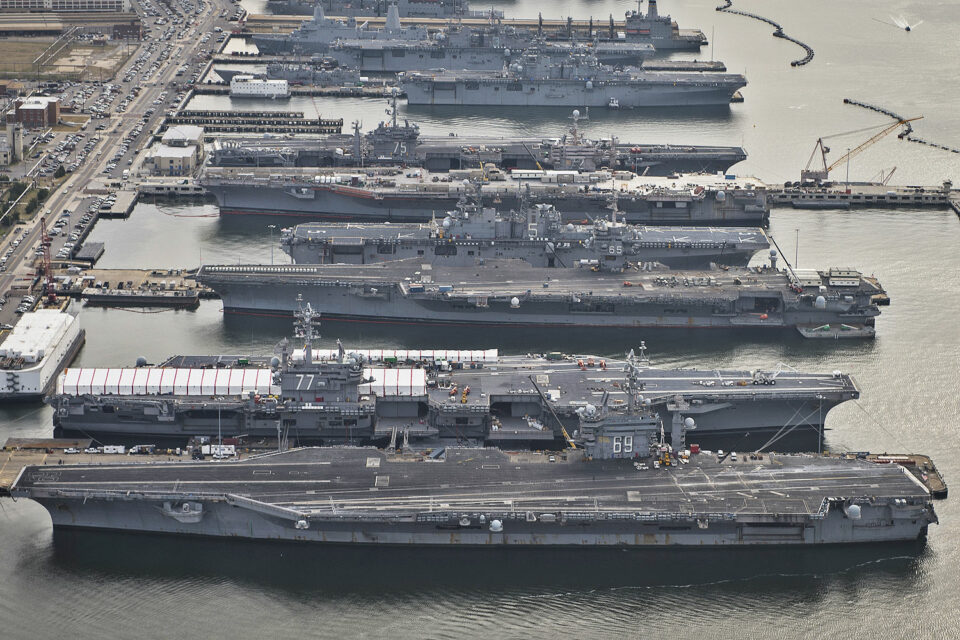
In 1979, during a three-year renovation, the SCANFAR system was removed and the Enterprise now had a conventional island.
During the five decades she was active, the USS Enterprise participated in numerous missions in places such as Vietnam, South Korea, Libya, Bosnia, Iraq and Afghanistan.
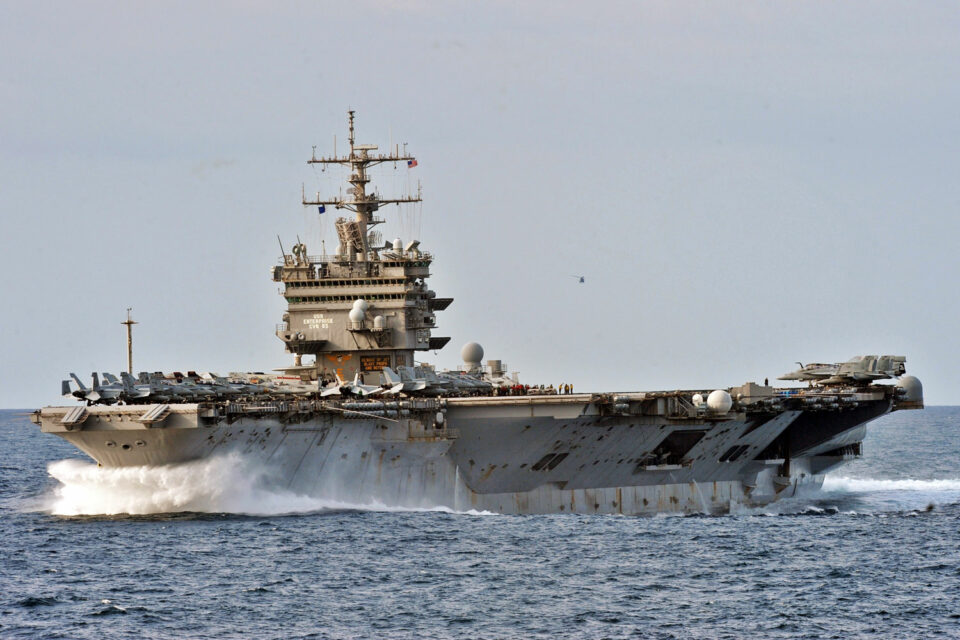
Part of the future USS Enterprise, the CVN-80
Known by the nickname “Big E”, the Enterprise continues to hold the title of the longest military ship in the world, at 342 meters long, which has not been surpassed by the Nimitz class, its successor, and the new Gerald R. Ford class.
Follow ADN: Instagram | Twitter | Facebook
The eighth ship of the US Navy to be named “Enterprise”, the CVN-65 will have its legacy continued by the CVN-80, a nuclear aircraft carrier due to be launched in 2025.
But the presence of the CVN-65 on the new Enterprise will not be just rhetorical: around 9 tons of steel taken from the old aircraft carrier are being recycled to be used on the CVN-80.

